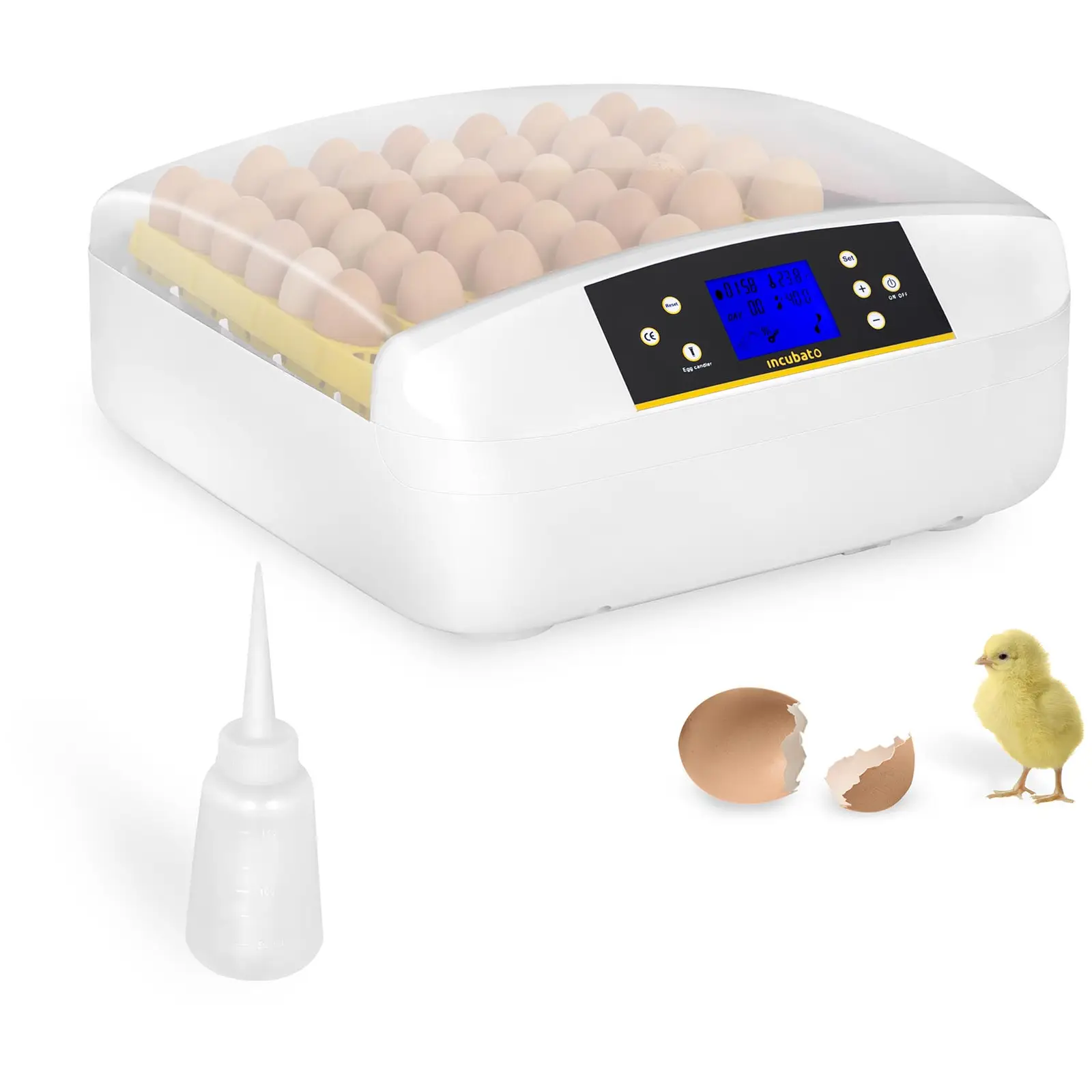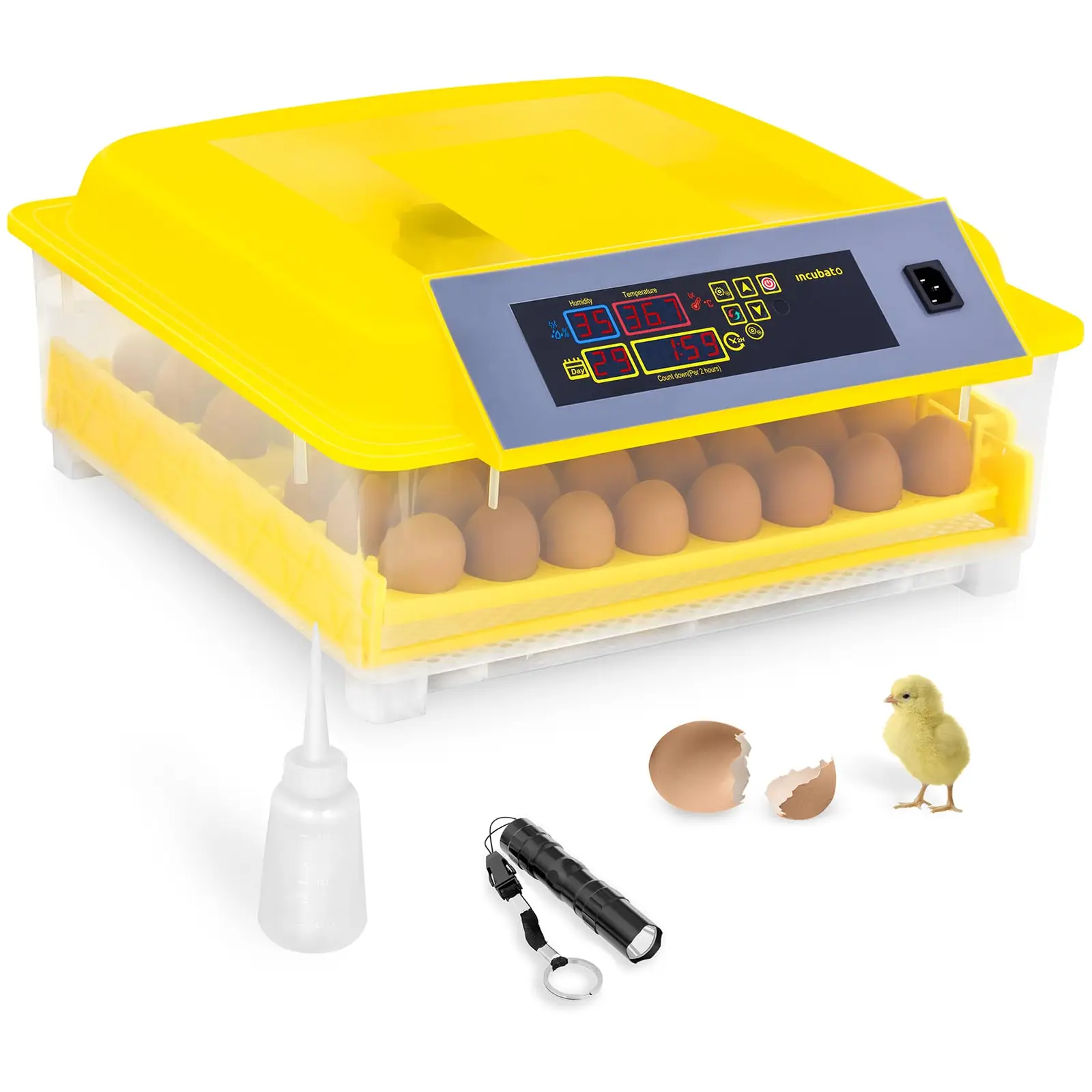There is much more to poultry farming than just feeding and providing good living conditions. Increasing the number of chickens in the hen house is an important aspect. An excellent way to do this is incubation, using special devices that enable the safe hatching process of chicks and goslings. Incubators have become a standard element of poultry farms. How do they work and how can you incubate the eggs of different species of birds? Read on to find out.

There is much more to poultry farming than just feeding and providing good living conditions. Increasing the number of chickens in the hen house is an important aspect. An excellent way to do this is incubation, using special devices that enable the safe hatching process of chicks and goslings. Incubators have become a standard element of poultry farms. How do they work and how can you incubate the eggs of different species of birds? Read on to find out.
A step-by-step guide to incubating chicken eggs
Before you can start the process of hatching chicks, you need the appropriate eggs. Two things are important here: their freshness – they should not be older than 5 days from being laid by the hen; and their quality – their shells must be free of cracks, roughness, and any other defects. Eggs on sale in shops will therefore not be a good idea in this case.
Once you have the right eggs, you should leave them to lie in a warm room for a while before putting them into the incubator. You can use this time to thoroughly clean and disinfect the interior of the incubator and warm it up to a temperature of 37.5 – 37.8 degrees Celsius. When the right heat has been reached, place the eggs in the incubator – with the more rounded end pointing up. From then on, you will need to regularly monitor the temperature inside the incubator, as well as rotate the eggs.
| Egg incubator for amateur hatcheries | Egg incubator for small farms | Egg incubator for professional breeding | |
| Egg incubator model |  Incubato IN-36DDI |  Incubato IN-96DDI |  Incubato IN-EI-528 |
| Chicken egg capacity | 36 pcs. | 96 pcs. | 528 pcs. |
| Temperature range | 20-39,5 °C | 20-50 °C | 30-39,5 °C |
| Power | 60 W | 120 W | 400 W |
| Egg candler included | Yes | Yes | Yes |
| Automatic egg rotation | Yes | Yes | Yes |
| Dimensions (LxWxH) | 48x41x12 cm | 50x47x38 cm | 72x52x135 cm |
| Weight | 3,4 kg | 5,48 kg | 60 kg |
In addition to the right temperature, keeping the right humidity is also important. Its level should be regulated according to the duration of incubation. In the first days of the process, you should aim for a humidity level of 50 – 60%. After 11 days, increase it to 70%. To measure these parameters, i.e. the temperature and humidity, use measuring tools such as a thermometer and a hygrometer, unless they are included in the incubator’s functions.
Rotating the eggs is also important. For the first 4 days you should do so at least 6 times a day, after this 2 turns per day should be enough. If everything goes according to plan, the chickens will start to hatch after 21 days.
Incubating chicken eggs – how many days does it take for chickens to hatch
Once the incubation process is over, it’s time for the chickens to hatch. Although this process cannot be clearly defined in time, its first signs will be the appearance of a small hole made by the chick in the egg shell. This will then continue to develop over the next 8 – 18 hours. The chicken’s body will then absorb the remains of the egg membrane, and its lungs will begin to get used to breathing and the change in air pressure. During this time, you will also hear the chick chirping and notice the egg swaying.
The second stage of hatching now begins, during which the chick rotates in the shell until it begins to break. The baby chicken will then break into the world. This step will usually take 30 minutes or more, so you should be patient and not interfere with the process. The chick has to do this on its own, and its successful completion will mean that the incubation and hatching process is complete.
Incubating eggs – the importance of the right temperature
As mentioned earlier, the right temperature is of great importance when incubating eggs. Even the smallest changes can significantly impact the quality of the eggs. This is because the embryo inside the egg is very sensitive, and therefore easily exposed to abnormal development. The result could be various types of external deformations, as well as far-reaching changes in the structure of internal organs.
The temperature inside the incubator chamber must therefore be constant. Sometimes, however, in the case of multi-level devices, a lower temperature can be observed on the lower shelves of the incubator. This only concerns incubators without a fan, as forced air circulation ensures efficient heat distribution throughout the entire chamber.
So how do you calculate the average temperature in order to keep it well balanced? Instead of placing the thermometer on the hatching tray, you should put it on the eggs themselves and, taking into account the temperature difference between the upper tray and the lower tray, set the temperature slightly higher than in the case of incubators with thermal circulation.

AGRICULTURAL TOOLS AND EQUIPMENT
EQUIPMENT FOR ALL SEASONS
How do egg incubators work?
Egg incubators ensure the proper hatching of poultry eggs. There are many models available on the market, so everyone should be able to find one matching their needs. They differ both in terms of technical parameters and size, and therefore the possibility of incubating a different number of eggs. You can also try to make your own egg incubator. Incubators usually resemble cupboards with drawers, which are actually hatcher trays on which the eggs are laid.
In operational terms, we can distinguish two types of incubators. One type has thermal circulation, the other does not. The first type are equipped with fans, which task is to maintain the humidity and temperature in the hatcher chamber. Those without thermal circulation are usually much smaller, and the eggs incubated in them require a different temperature than in incubators with thermal circulation. Moreover, the lack of a fan means that the air flow is through the holes at the base.
Commercial incubators come equipped with modern systems controlling the parameters, digital displays, automatic egg turning functions, as well as extremely efficient heating systems. These solutions let the incubation process take place automatically, and you only have to check on the embryos from time to time, using an egg candler – a tool that allows the egg shell to be x-rayed. Some incubators come with a built-in egg candler.
Incubating goose eggs
Goose farms are also just as popular as chicken farms. It should therefore come as no surprise that many people also buy incubators for goose eggs. The differences here, compared with the incubation of chicken eggs, is both in terms of the size as well as duration, which is usually 29 – 30 days.
From the 5th day of incubation, the eggs should be turned every 3 hours, so an incubator with an automatic turning function will come in very handy. The temperature for incubating goose eggs is 37 – 37.6 °C and should be maintained depending on the particular incubator. As previously mentioned, different temperatures are recommended for devices with thermal circulation than for ones without thermal circulation. The humidity level should be maintained at 70 to 75%.
Incubating chicken and goose eggs – summary
The incubation process of both chicken and goose eggs requires the right equipment. Incubators, which ensure the proper development of the embryos, will help greatly here. Their numerous functions can make the whole incubation process virtually automatic. Each step will be taken over by systems controlling humidity and temperature, as well as frequently rotating the eggs in the hatcher chamber. Incubating eggs will then be a simple task, even for beginners.
Are you thinking of building your own chicken house? Check out our how to build a chicken coop for dummies guide.















Share